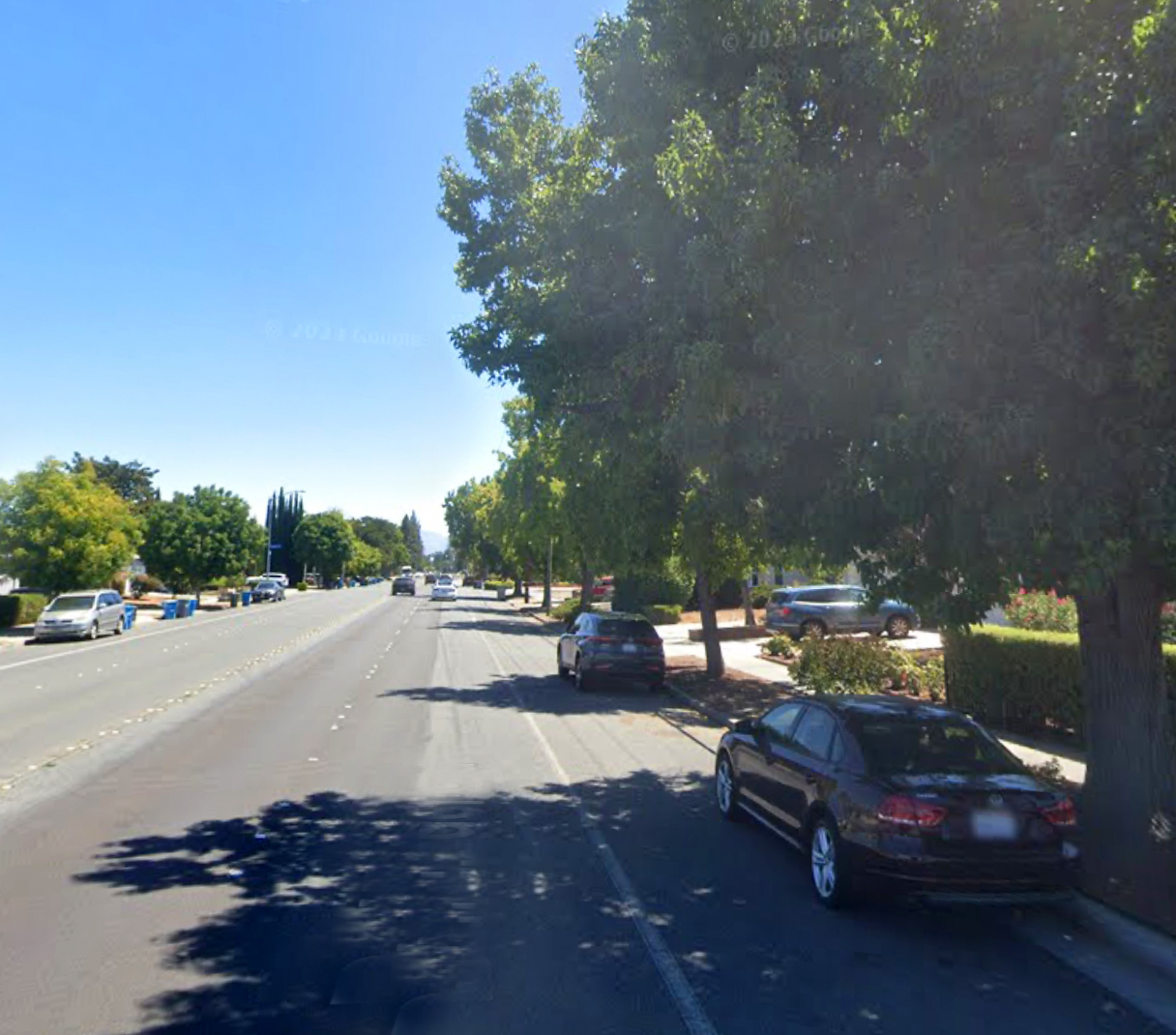Many cyclists are leery about biking in the center of a lane, and many drivers think that bikes shouldn’t be there. It’s actually one of the best places for adults to bike (kids should use the sidewalk) if the street has no bike lanes or only bike “paint stripe” lanes, especially if you are concerned about being visible to cars. It’s legal in almost all circumstances, too. Read on for more about why it is a great option for many cyclists.

You are less likely to be hit
Physically separated and protected bike lanes are the best way to keep safe when sharing the road with motor vehicles (see this article), but very few roads have them yet. Most roads have painted stripes, a bike symbol (“sharrow”) in the middle of the lane, or nothing at all marked on them. Cars use the entire road surface, including the bike lane, to make turns or pass.
It may feel counter-intuitive that being farther out in the flow of traffic while biking can reduce your accident potential compared to being next to the curb. Biking in the center of the lane, however, can reduce your chance of crashes in two ways: avoiding being doored and avoiding being hit by turning cars. Visibility is the key reason.
Bollinger Road near Miller Avenue in Cupertino, with typical painted (“Class 3”) bike lanes next to parked cars.

Avoiding being “doored”
Many painted bike lanes are painted right next to parked cars, which makes cyclists vulnerable to being hit when drivers open their doors suddenly. Because you are coming from behind the parked motorist, they just don’t see you–and the shade from trees on residential streets exacerbates this issue. This is one of the most common bicycle injuries and can even be fatal. Moving to the center of the lane allows you to avoid this common issue.
You are also less likely to be hit by cars leaving driveways of homes or businesses. Bicyclists can be screened from view by parked cars or buses, or bushes until it is too late for the motorist to stop. Look for areas where this is more likely to be an issue and consider moving to the center of the lane to be safer.
Avoiding right hook crashes
Biking in the center of the lane also reduces the chance that a car will try to do a “right hook” maneuver (to learn more about right hooks, see this post) around you to make a right turn. Motorists often misjudge distances or try to “beat” you to the corner, causing an accident. Always listen and watch for a driver rapidly slowing down on your left or crowding you as you approach a corner and hang back if necessary.
Watch also for cars turning left across your lane because other cars traveling in the same direction as you can block you from sight if you are close to the curb.
It is legal
California law says people who ride bikes must ride as close to the right side of the road as practicable, but there’s many exceptions which in effect make it legal in almost all circumstances for bikes to ride in the center of the lane. These include when passing, preparing for a left turn, avoiding hazards, if the bike lane is too narrow to share, or if approaching a place where a right turn is authorized.
Bike Lane Hazards
Anyone who uses bike lanes regularly will likely complain about the hazards to be found in them.
Delivery truck blocks bike lane, and half the vehicle lane too, on Rodrigues Avenue in Cupertino.

Trash cans and tree debris are the most typical hazards, but sometimes the hazards are even bigger, such as parked trucks. Even in bike lanes separated by concrete barriers, you can find idling delivery trucks and uber eats-type delivery vehicles. (This is common in the physically separated bike lanes on Pacifica Drive near Torre in Cupertino.)
Whenever there are hazards in the lane, it is always legal to move to the center of the driving lane. Don’t get a flat tire riding in a bike lane with broken plastic or glass–just leave the lane.
Where right turns are authorized
You can also legally always move to the center of the lane whenever approaching a place where right turns are authorized. This law, in effect, allows moving to the center almost everywhere.
Other considerations
Riding side by side
If you are riding in the middle of the driving lane, do you have ride single file? No! California allows you to ride side by side with another cyclist (almost every state does.)
Using the sidewalk instead
If the bike lane has hazards, or riding in the bike lane feels unsafe, is it better to bike on the sidewalk? Likely not. Riding on the sidewalk is illegal for cyclists over age 13 (unless accompanying a child 13 or under), and you can be cited for this. Plus, as many adults ride quickly, it can be difficult for motorists to react and stop when leaving a driveway which crosses a sidewalk.
Summary
Numerous studies show that the safest biking infrastructure for all ages are trails and physically separated and protected bike lanes.
Of course most routes include roads where these amenities aren’t available. If you are an adult cyclist, consider riding in the center of the lane whenever it makes you more visible to cars. Stay safe out there!
